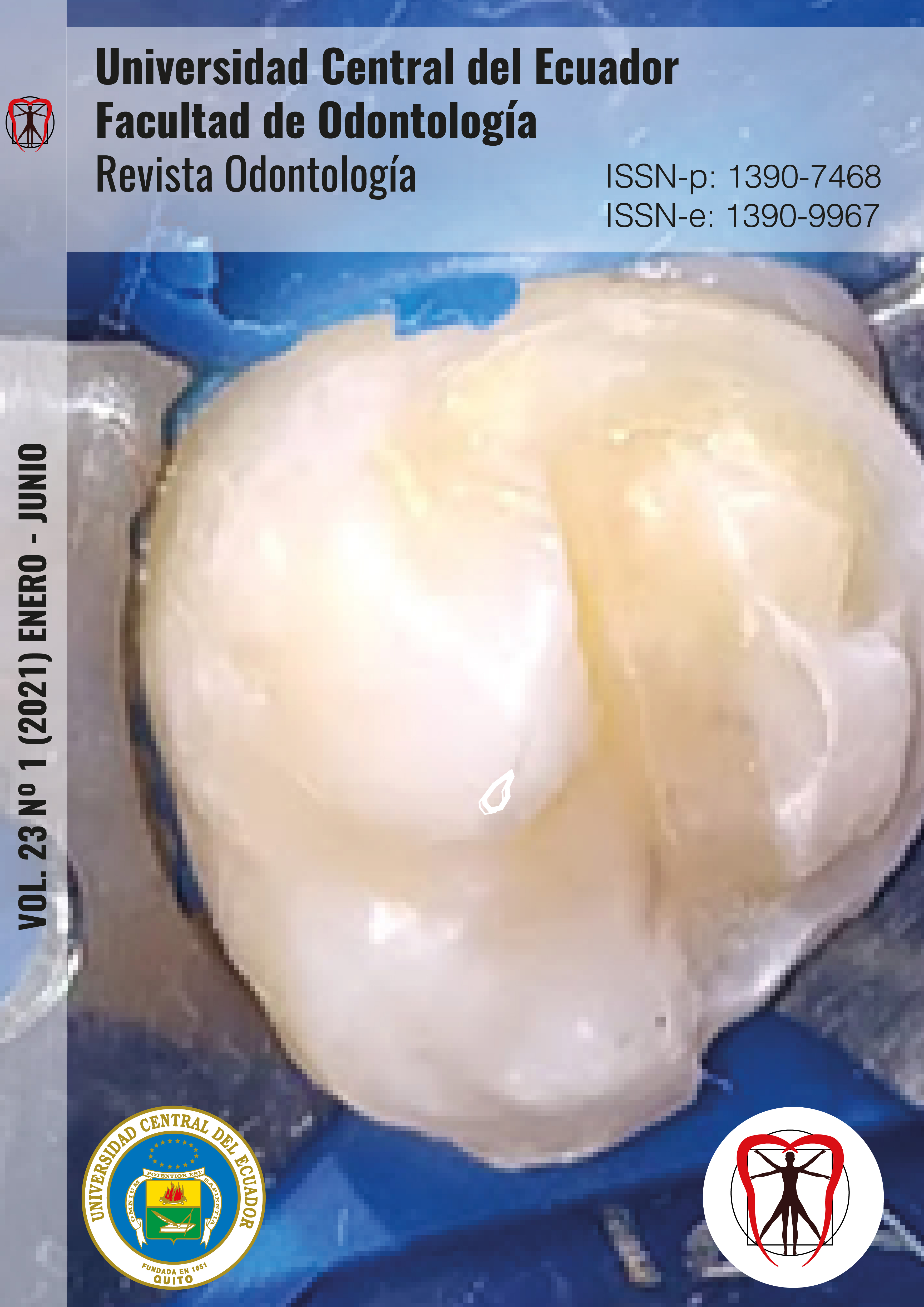Factors affecting the self-perception of children with fitted lips and palate. Review article self-perception of children with LPF
DOI:
https://doi.org/10.29166/odontologia.vol23.n1.2021-e2670Keywords:
self-perception, psychological, children, cleft lip and palateAbstract
Objective: To know the factors that affect the self-perception of children with cleft lip and palate by means of a bibliographic review. Material and Methods: A bibliographic review was carried out, taking as reference 2195 scientific articles from: Pubmed, Scielo, Latindex and Google Scholar. We found 85 duplicate articles, 45 articles met the inclusion criteria, they were articles with scientific relevance in English and Spanish with a time interval of 10 years. Our research questions were: What are the factors that most affect children with this condition emotionally? and What would be the best alternatives for the adequate treatment of these patients? Results: They presented to a greater extent a communication problem in two subscales: social environment and proactive behaviors. An increase in social avoidance was observed among the adult group. The female sex is more affected compared to the male sex being facial appearance and speech the major concerns accompanied with social introversion, besides that a high number of patients have experienced bullying. Conclusion: It was found that children with cleft lip and palate have a high probability of developing socio-emotional alterations during early childhood. The factors that most affect patients with cleft lip and palate emotionally are the notable facial differences, problems in phonation and feeding, negative comments regarding their physical appearance and psychological trauma due to multiple surgeries, while an adequate treatment should include psychological management and speech therapy since these are fundamental pillars for an integral treatment being equally important as surgery.
Downloads
References
Stock N, Feragen B, Rumsey. Adults' Narratives of Growing Up With a Cleft Lip and/or Palate: Factors Associated With Psychological Adjustment. The Cleft Palate–Craniofacial Journal. 2016 Marzo.
GUSSY M, KILPATRICK N. Blackwell Publishing Ltd The self-concept of adolescents with cleft lip and palate. International Journal of Paediatric Dentistry. 2006.
Sischo L, Genderson W, Broder HL. Quality-of-Life in Children with Orofacial. Critical Reviews in Oral Biology & Medicine. 2017.
Kesande T, Mugambe Muwazi , Bataringaya. Prevalence, Pattern and Perceptions of Cleft Lip and Cleft Palate Among Children Born in Two Hospitals in Kisoro District, Uganda. BMC Oral Health. 2014;: p. 7.
Mena J, Gonzalez I, Venegas T, Gozalez V, Medina S. Epidemiologia descriptiva de hendiduras labiopalatinas en la Clínica de Labio y Paladar Hendidos de Morelia. Cirugia plastica Ibero-latinoamericana. 2017 Enero-Marzo; 41(1): p. 41-45.
Raghavan S, Philip K, Puneet B, Marsusson A. Aesthetic perceptions and psychosocial impact of malocclusion: comparison between cleft and non-cleft patients and their parentsnon-cleft patients and their parentsnon-cleft patients and their parents. European Journal of Orthodontics. 2018 Abril 19.
Broekman GVDZ, Martins T, Dupas G. LIP AND PALATE CLEFT: CHILD AND ADOLECENT’S EXPERIENCE. Cienc Cuid Saude. 2015 Julio-Septiembre; 14(3).
Richman LC, Holmes CS, Eliason MJ. Adolescents with Cleft Lip and Palate: Self-Perceptions of. Cleft Palate Journal. 1985 Abril; 22(2).
Schijndel , Litschel R, Maal , Berge SJ, Tasman Aj. Eye tracker based study: Perception of faces with a cleft lip and nose deformity. Journal of Cranio-Maxillofacial Surgery. 2015 Ovtubre; 43(8).
Klassen A F TEFWKWPALCSJGT. Quality of Life of Children Treated for Cleft Lip and/or Palate: A Systematic Review. Journal of Plastic. 2012 Mayo; 65(5): p. 47-57.
Sigler A. Protocolo para la planificación quirúrgica en las clínicas de labio y paladar hendidos en la zona noroeste de la República Mexicana. Cirugía Plática Iberolatinoamericana. 2017 Juilo-Septiembre; 43(3).
Palacios D, Alvear M, Alvarado A, Reinoso S. Atención integral del paciente con labio y paladar fisurado. Odontologia Activa. 2020 Agosto-Mayo; 5(2): p. 27-30.
Khoun T, Malden PE, Turton BJ. Oral health-related quality of life in young Cambodian. International Journal of Paediatric Dentistry. 2018 Mayo; 28(3): p. 326-334.
Namankany AA, Alhubaishi A. Effects of cleft lip and palate on children’s psychological health. Journal of Taibah University Medical Sciences. 2018 Junio 5; 13(4): p. 111-118.
Ruff RR, Sischo L, Broder H. Resiliency and socioemotional. Community Dent Oral Epidemiol. 2016 Agosto; 44(4): p. 71-80.
Downloads
Published
How to Cite
Issue
Section
License
Copyright (c) 2021 Santiago José Reinoso Quezada, Jheniffer Andreina Maldonado Romero, Kelly Lisseth Campoverde Arce

This work is licensed under a Creative Commons Attribution-NonCommercial-NoDerivatives 4.0 International License.


